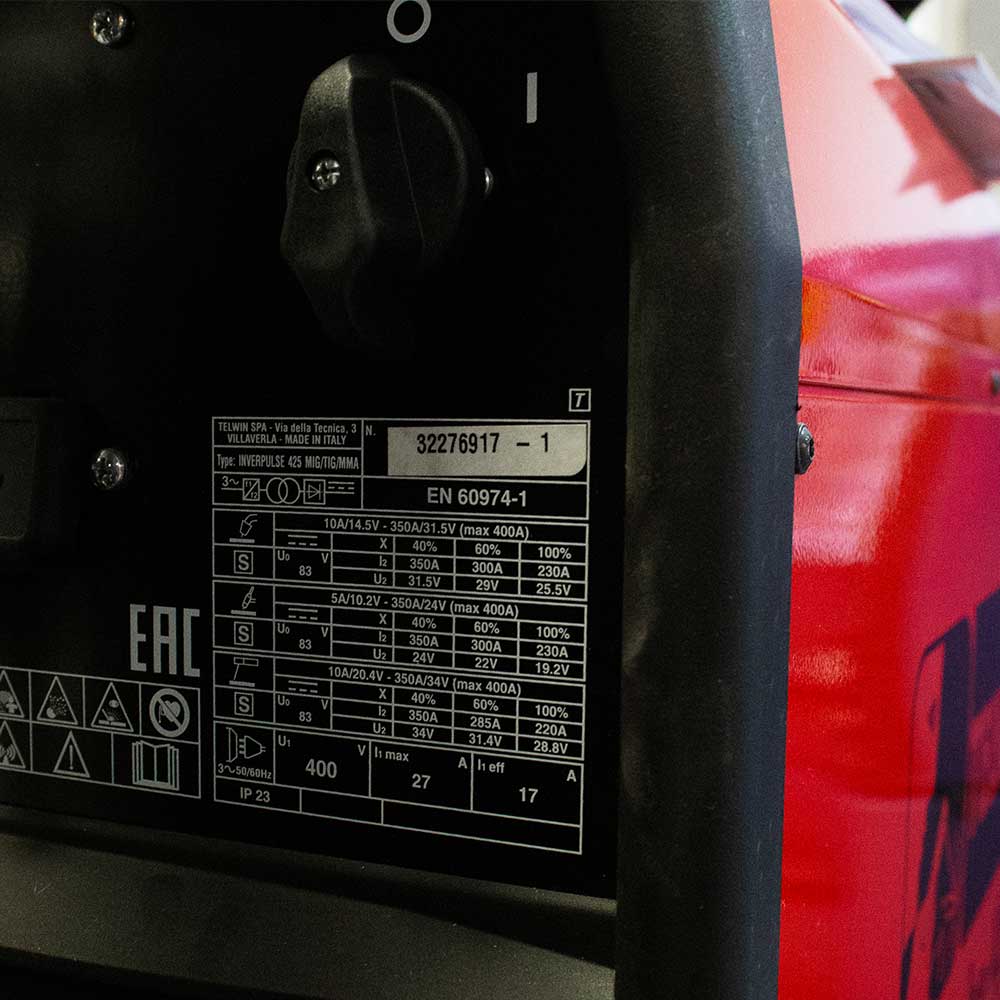Welding Duty Cycle Explained: Why It’s One of the Most Important Specs to Understand
May 27, 2025When browsing welding machines or reading a spec sheet, you’ll often see figures like “60% @ 200A” or “100% @ 160A.” These aren’t just numbers—they’re critical to how your welder performs and lasts.

A welding duty cycle describes how long a welder can operate at a given amperage within a 10-minute cycle without overheating. For example:
- A 60% duty cycle at 200 amps means the machine can weld for 6 minutes continuously at that current, then must cool down for 4 minutes.
- A 100% duty cycle at 160 amps allows continuous welding with no pause required.
Why Does Duty Cycle Matter?
Ignoring duty cycles can result in:
- Thermal shutdowns that interrupt workflow.
- Premature equipment failure.
- Inconsistent weld quality.
For workshops aiming to improve efficiency, safety, and machine longevity, understanding duty cycles is essential.
Factors That Influence Duty Cycle
Several factors affect a welder's duty cycle:
- Ambient temperature: Ratings are typically based on 40°C environments—cooler conditions may improve performance.
- Machine size and cooling systems: Fan-cooled or water-cooled systems tend to have better duty cycles.
- Power source type: Inverter-based machines often offer better duty cycles than transformer-based units.
How to Choose the Right Welder Based on Duty Cycle
- Assess your average welding time and amperage needs. If you're welding high-current jobs back-to-back, look for a welder with a high duty cycle.
- Don’t just buy the biggest machine. Overspending on amperage you won’t use wastes budget.
- Match machine performance to task type. For example, intermittent TIG work on stainless steel has very different demands than long MIG welds on thick mild steel.
Common Myths
- Myth: “100% duty cycle means better quality.”
Truth: It means better thermal performance at a specific amperage—not necessarily better welds. - Myth: “Duty cycle doesn’t matter for occasional users.”
Truth: Even hobbyists can trip thermal overloads if they don’t know what the cycle is.
Duty cycles aren’t just a technical detail—they’re vital to productivity, safety, and machine life. Whether you're welding daily or just starting out, make sure you're matching your machine to your workload.
Need help picking the right welder for your needs?
Visit our showroom, explore our online range, or speak to one of our experts for advice. Machine in images --> https://weldingsuperstore.co.
Machine in images --> https://weldingsuperstore.co.
OTHER ARTICLES
Welding Superstore Christmas Opening Hours 2025
December 15, 2025
What Shade Do I Need for Different Welding Processes? (2025 Guide)
December 8, 2025
Christmas Gift Ideas for Welders: A Helpful Guide for Partners, Friends & Family
December 1, 2025
Mosa Magic Weld 200 YDE Diesel Welder Generator – Compact Power for Serious Mobile Welding
November 24, 2025
The Best Workshop Heaters for Winter - Stay Productive with SIP
November 17, 2025
Three GYS Galaxy 400T W Multi-Process Welders Sold to Customer
November 10, 2025
Save Up to 40% in Welding Superstore’s Autumn Sale!
November 3, 2025
A Best-Seller: Parweld Panther MIG Welding Gauntlets (P3825)
October 27, 2025
Keep Your Workshop Safe and Efficient with Regular Kemper Filter Changes
October 21, 2025
Keep Your Workshop Running Smoothly with Reliable Welding Consumables
October 14, 2025

